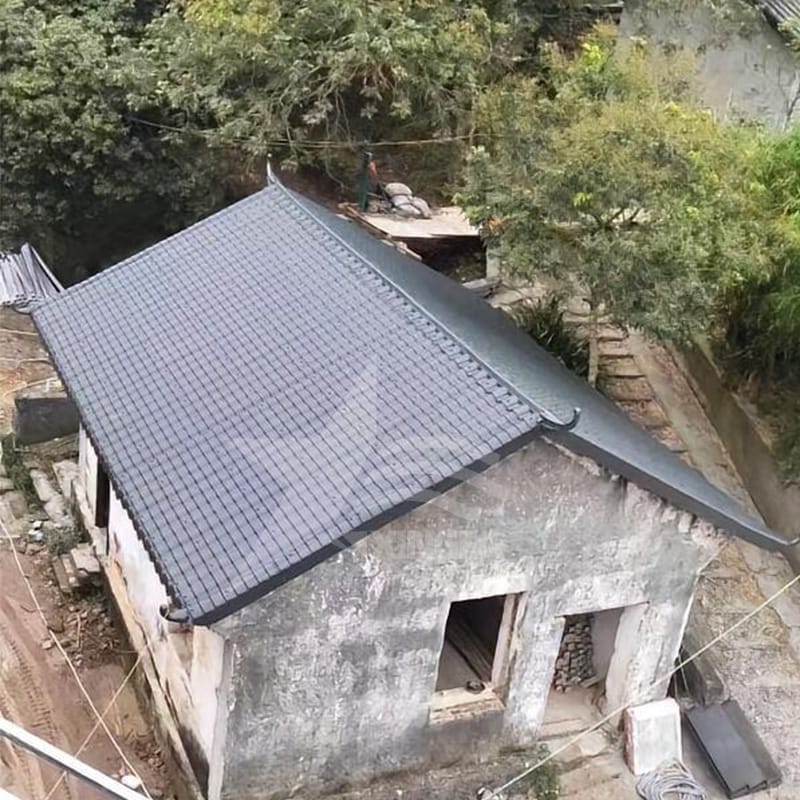Synthetic resin tile is widely used in the national market because of its advantages of rich color, green environmental protection, self-cleaning performance, anti-corrosion and weather resistance, light quality, simple installation and so on. Synthetic resin tiles also have very good thermal insulation properties, reflecting sunlight and reducing heat absorption. These properties make synthetic resin tiles an ideal insulating material. So how much temperature can synthetic resin tiles withstand?

Synthetic resin tile is a material made of synthetic resin and other additives, with very good chemical resistance, wear resistance and heat resistance. Among them, polyvinyl chloride (PVC) is a common synthetic resin material, and its high-temperature resistance mainly depends on the composition and structure of its material, as well as its processing and use conditions. In general, PVC is a solid material at room temperature, but when the temperature rises, its molecular chains begin to unwind and the material becomes soft and prone to thermal deformation. Therefore, in the manufacturing process of synthetic resin tile, PVC materials will usually add some stabilizer and plasticizer to improve their high temperature resistance.

And according to different manufacturing processes and additive formulations, the high temperature resistance of synthetic resin tiles will also be different. Generally speaking, the thermal deformation temperature of PVC material is about 60℃, but after the addition of appropriate stabilizer and plasticizer, its high temperature resistance can reach more than 70℃.

Comprehensive above, synthetic resin tile manufacturers believe that the purchase of resin tile must first choose the quality of the regular manufacturers and brands. Secondly, when installing the synthetic resin tile, the spacing between the purlins should be controlled at about 660mm to 750mm to prevent the resin tile from sagging or bulging, affecting the waterproof effect; and the small spacing will increase the engineering cost and material waste.

